In these changing times, people are increasingly thinking about how they can become more self-sufficient.
A productive garden is the aspiration of many homeowners and with increasing awareness of how our lifestyles impact the environment, people are looking for sustainable methods of producing the food they need that work in harmony with nature.
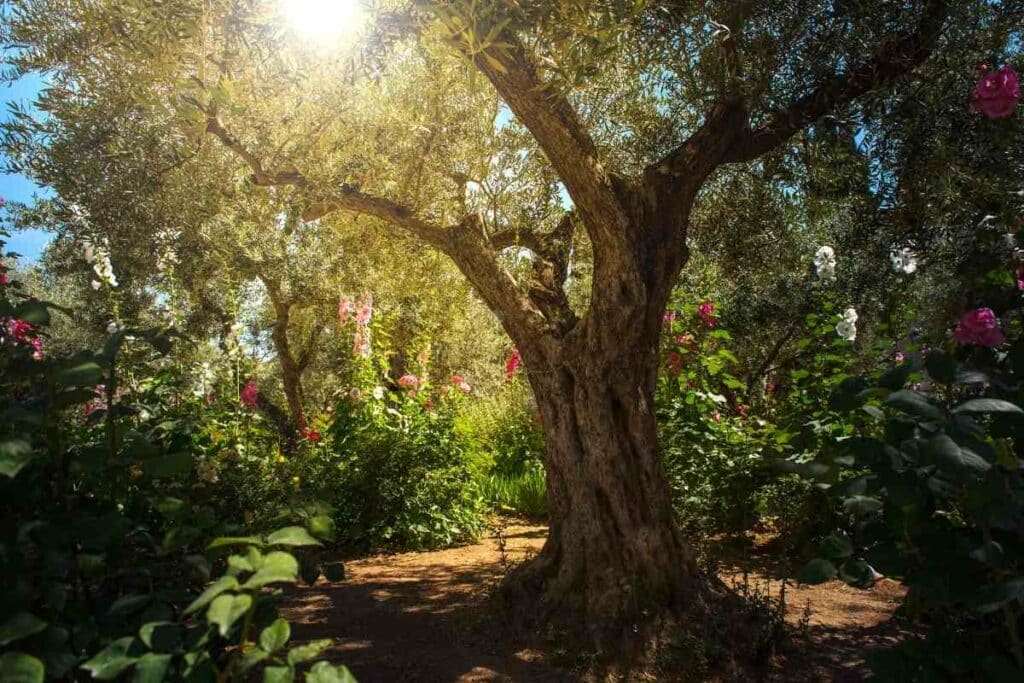
Forest gardens create a food-producing ecosystem that quickly becomes a rich and productive habitat.
These agroforestry gardens that use permaculture principles have the notable advantage of being significantly self-sustaining meaning that the labor required to maintain the garden may diminish with time.
What to Expect? If this sounds like “the dream” for you, we have compiled the ultimate forest garden guide, to equip you with everything you need to know to get into forest gardening and establish and maintain a forest garden habitat that can feed you and your family for a lifetime and then some!
What Is a Forest Garden?
Forest gardens are food-producing, low-to-no maintenance systems that are patterned after woodland ecosystems to become not only visually rich and productive gardens but also thriving natural habitats:
Forage food from a forest garden
These gardens use trees and perennial plants to yield a wide range of foodstuffs including nuts, spices, berries, herbs fruit, alongside annual crops that may be grown in raised beds, on frames, or up and alongside the taller plants and trees.
In these wild or outdoor pantries, you don’t harvest your food, you forage it, and if you are a canny gardener, there will always be something to eat all year round.
Agroforestry principles
The characteristic feature of the forest garden is its emulation of a forest or woodland with plants being layered or stacked by height, with ideally native species in keeping with the location and climate.
Create a habitat where nature takes care of itself
The secret of the forest garden is the creation of a fertile natural habitat that will promote beneficial relationships with local animals, insects, and plants.

This approach builds resilience in the garden and should reduce or even remove the need for continual cultivation, chemicals, pesticides, and man-made fertilizers.
The key benefits of forest gardens
If you are new to forest gardening, the concept of making trees and shrubs the foundation of your food-producing garden may be daunting.
Establishing a forest garden also takes time, so what are the benefits of getting your food forest up and running?
A forest in your garden!
This three-dimensional approach to gardening turns even the flattest and uninspiring urban backyard into a rich green haven.
You can escape to your forest garden and spend hours foraging for berries, fruit, or leaves to enrich your diet.
Work with the land
Forest gardening is all about letting nature do what it does best.
You are creating an environment where plants, insects, and animals can establish beneficial relationships, just like they would have in mature woodland.
So you can let the squash vine climb a tree trunk or plant basil with your tomatoes.
A nitrogen-rich ground cover crop also protects and nourishes the soil for all the plants.
Boost the productivity of your garden
By growing horizontally and vertically you can enjoy great yields of fruits and vegetables, even though you are not growing intensively.

The variety of plants means that you can produce a wide range of crops.
Throw in a couple of ducks for slug control and you may be entirely self-sufficient!
A low-maintenance approach to gardening
A forest garden is the smallholder’s secret as they design it to reduce the amount of work that has to be done to grow food.
Careful selection of plants and trees ensures hardiness and suitability for your climate.
Insightful companion planting and intercropping boost yields without additional labor.
Enjoy diverse crops throughout the year
The layered approach to the garden provides natural shelter and traps warmth, meaning that you may achieve a longer growing season.
Forest gardeners carefully plan their gardens to include plants that have different harvesting times, to ensure a food supply throughout the year.
Encourage biodiversity in your garden
A forest garden is not just for you.
This ecologically conscious and sustainable form of gardening creates a natural habitat where all creatures can benefit.

By creating a garden that is in balance with nature, you’ll attract beneficial pollinators like bees, insects, and birds.
Protect your soils
Forest gardening is a beneficial form of gardening for preventing soil erosion.
The trees hold the land together and the varying layers of plants cycle organic matter to create rich humus that sustains and nourishes your plants.
Dynamic accumulator species like comfrey help you by sending down deep roots and mobilizing sub-soil nutrients that other plants can use.
Forests? Trees? Will a forest garden work in my backyard?
Thankfully, you don’t need acres of woodland to establish a forest garden on your property.
Forest gardening denotes the principles used in creating and maintaining your garden.
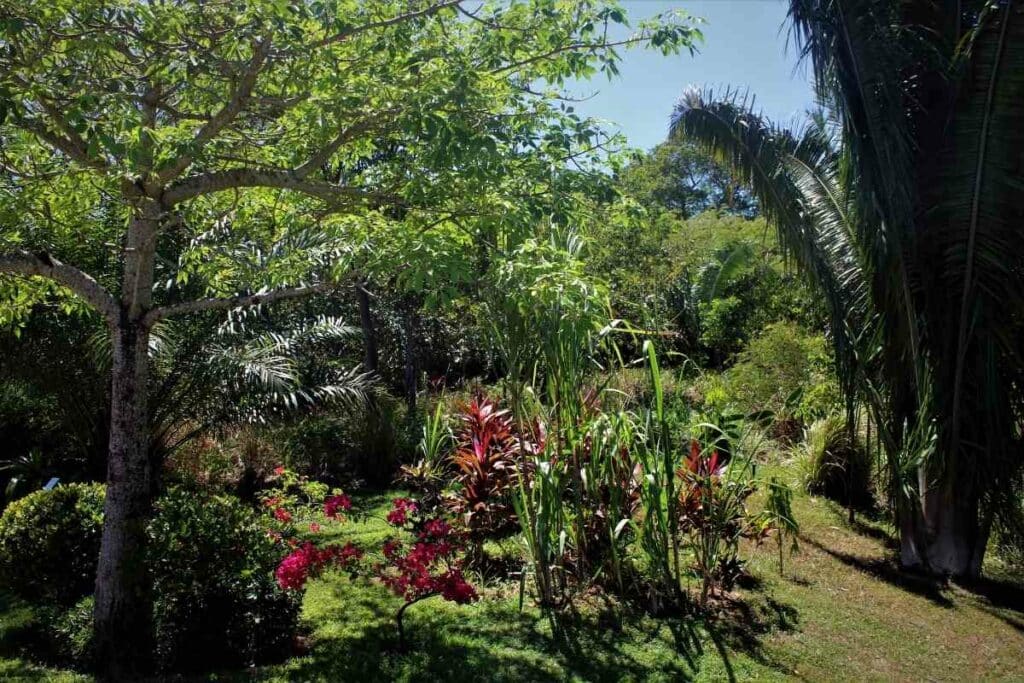
This means you can have forest gardens that thrive equally in a city or on an expansive smallholding.
The main thing is that the arrangement of plants and their relationships take on a life of their own providing food for you and wildlife year after year.
The history of Forest Gardening
Forest gardening is all about a return to the land and finding practical ways of making land productive without the energy and labor-intensive methods of contemporary crop-raising.
The British smallholder and agriculturalist Robert Hart coined the term “forest garden” in the 1980s. He had sort to establish a self-sufficient farm for himself and his disabled brother.
Hart found the labor of maintaining a moderately sized smallholding too intensive and explored alternative, less intensive methods of farming.
The concept of forest gardening is not new and is considered by some to be based on the Garden of Eden.
Cultures and communities throughout history and across the world have used forest-based polyculture for subsistence.
Examples include:
- Keralan forest gardens, known as home gardens that combine fruit and spice trees with livestock and arable crops:
- The rich and fertile Chagga gardens of Mount Kilimanjaro in Tanzania with bananas, pineapple, and arabica coffee as a cash crop.
If these lush, foliage-rich tropical settings seem a far cry from your suburban yard, it’s important to note that Robert Hart developed his forest garden in the UK which is USDA Zone 9.
Hart’s interpreted this ancient form of gardening as a seven-layer model that drew on the different layers of plants and organisms found in a forest.
In time and with much experimentation, his pioneering intercropping forest garden model proved able to sustain itself with little intervention.
Other proponents of forest gardening come from the permaculture movement and include pioneers like Bill Mollison and Graham Bell.
Setting up a forest garden: the seven layers
Remember, with a forest garden, you are not planting a garden but building a living system.
Forest gardening has a big permaculture following and has many similarities in approach. Let’s run through the seven layers that make up a forest garden.
1. The upper canopy
Mature fruit trees make up the upper canopy of a forest garden.
This is the backbone of a forest garden and may also be described as foundation trees.
These are usually the original trees that were in place in the garden or grounds and include cropping fruit and nut trees.
The crowns of the trees form the highest layer of vegetation crop production in the forest garden but may have to be omitted in smaller gardens.
2. The lower canopy or sub-canopy (Crab Apple)
Alternative names for this layer include the low-tree layer, understorey, underbrush, or undergrowth. It is directly beneath, or in front of the canopy layer.
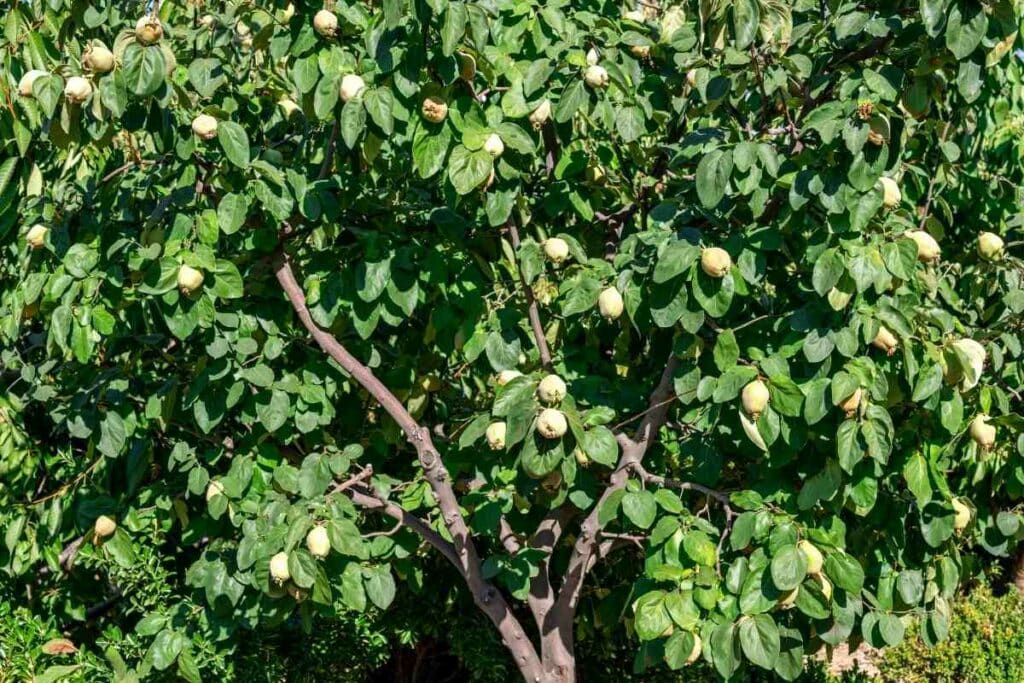
This layer consists of dwarf fruit and nut trees and can become highly productive very quickly when compared to the upper canopy.
In many cultures, this is where cash crops like coffee or olives are grown.
3. The vertical layer (vines and climbers)
The vertical layer consists of climbing plants and climbers.
This can be an extremely practical part of any forest garden as it takes up little space.
By using the vertical space in your garden you can grow even more food at multiple layers.
Forest gardeners use frames, tipis, and even other plants and trees as scaffolding to support vines and climbers.
Just makes sure you have a ladder on hand for harvesting!
4. The shrubs, and bushes layer
These perennial plants grow closer to the ground and often require little maintenance other than to prune back over-enthusiastic growth.
Most plants in this layer, which includes many berry varieties, grow no more than three meters in height.
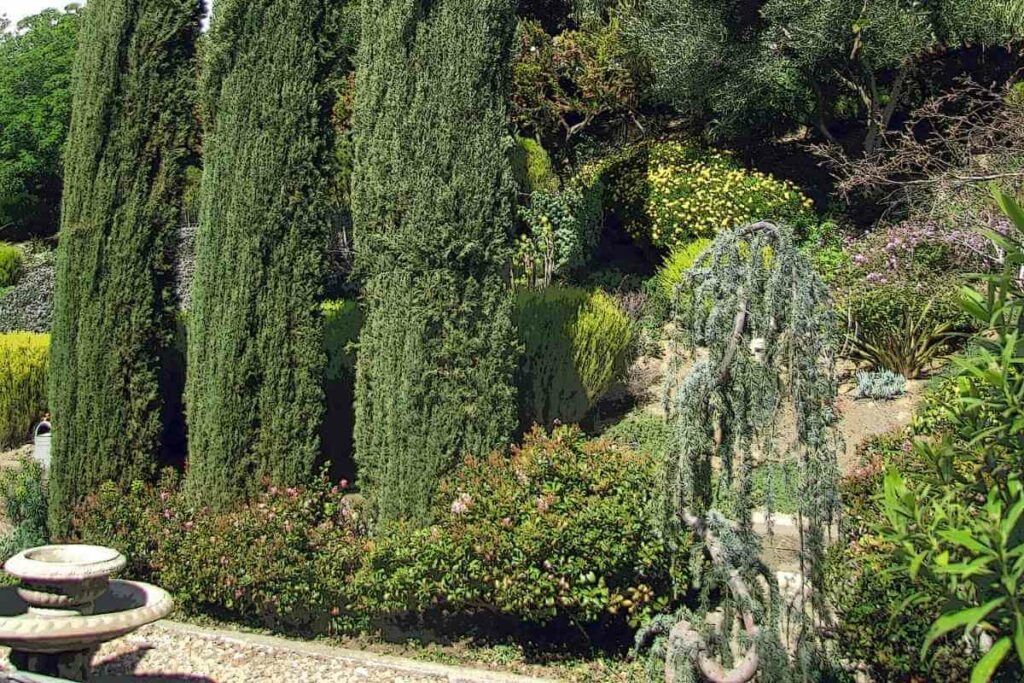
Along with food plants, some forest gardeners also include herbaceous plants with medicinal properties in this layer.
5. The herbaceous layer (perennials and annuals)
This layer includes more conventional gardening selections.
These plants grow, flower, fruit, and die back every year and do not have woody stems.
With careful selection and planting, many of these plants can be reasonably low maintenance and relied on for good cropping.
The herbaceous layer protects the soil from erosion and leguminous plant species will add back beneficial nitrogen.
The herbaceous layer is also a magnet for the pollinators, beneficial insects, and birds that will do the hard work of getting your plants and trees fully pollinated.
6. The ground cover layer
Forest gardeners tend to this area with spreading, edible plants that create a forest floor.
Understandably, these plants have to be shade-loving and most ground cover plants grow close to the ground, ideally covering all the exposed soil in the garden.
It often overlaps with the herbaceous layer with both layers combining to form a single layer to garden.
7. The roots and rhizosphere layer
The productivity of a forest garden spreads beneath the soil with plants that have nutritious storage organs growing beneath the soil.
There is a large range of plants that have edible roots and gardeners may cultivate some of these species as part of the herbaceous and ground cover layer.
Optional or additional forest garden layers
Depending on your terrain and natural resources you may add or remove layers from this model to achieve the forest garden effect.
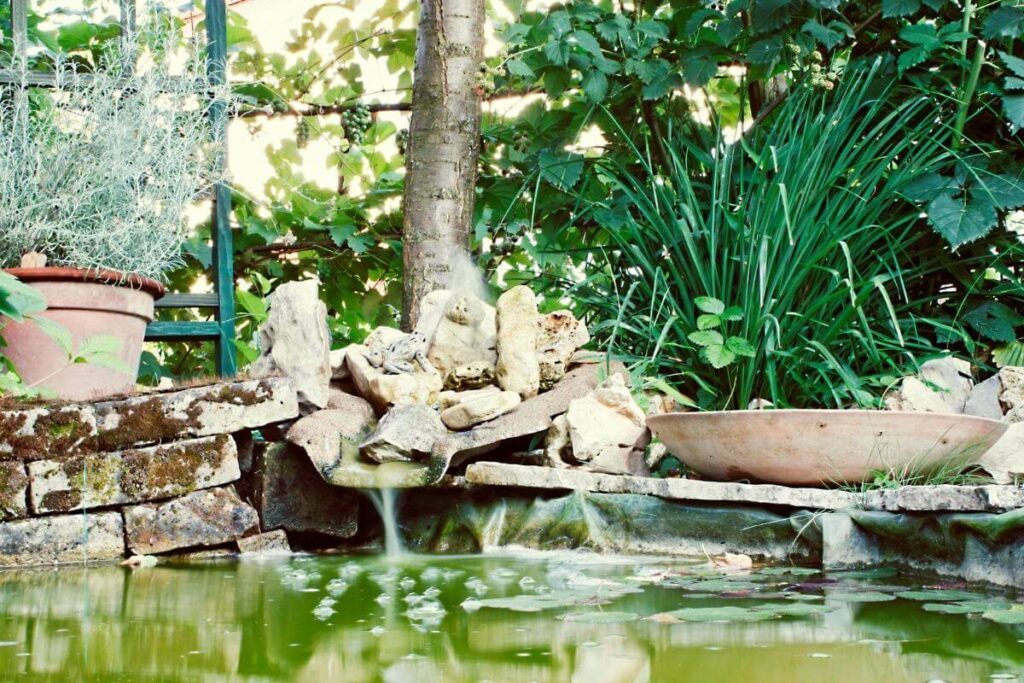
There are an additional two layers that you can introduce to the forest garden if you have suitable land.
8. The fungal layer
Forest gardeners also cultivate mushrooms and fungi like Chicken of the Woods along with fungal species that colonize the soil.
This is a new layer that recognizes the beneficial effects of fungi on the quality of soil and plants in a forest garden.
Wild fungi growing spontaneously are a sign of a thriving forest garden.
9. The aquatic layer
Streams or ponds may be incorporated into a forest garden as an aquatic or wetland layer.
Water is not only a source of irrigation but also an ecosystem that can provide edible plants and a welcome habitat for local wildlife and ducks if you keep them for slug-eating.
80 trees, plants, and crops for a food forest
Creating a forest garden is not only about producing food but also focused on creating a healthy ecosystem that benefits local wildlife and plants just as much as serving human needs.
This type of organic gardening requires a long view, as the plant established (especially in the upper layer) may produce for successive generations.
Here are 100 plants to consider including in any forest garden.
Rhizosphere layer plants

- Potatoes
- Carrots
- Parsnips
- Yams
- Tarrow
- Jerusalem artichoke
- Beets
- Turnips
- Kohlrabi
- Radishes
Groundcover plants
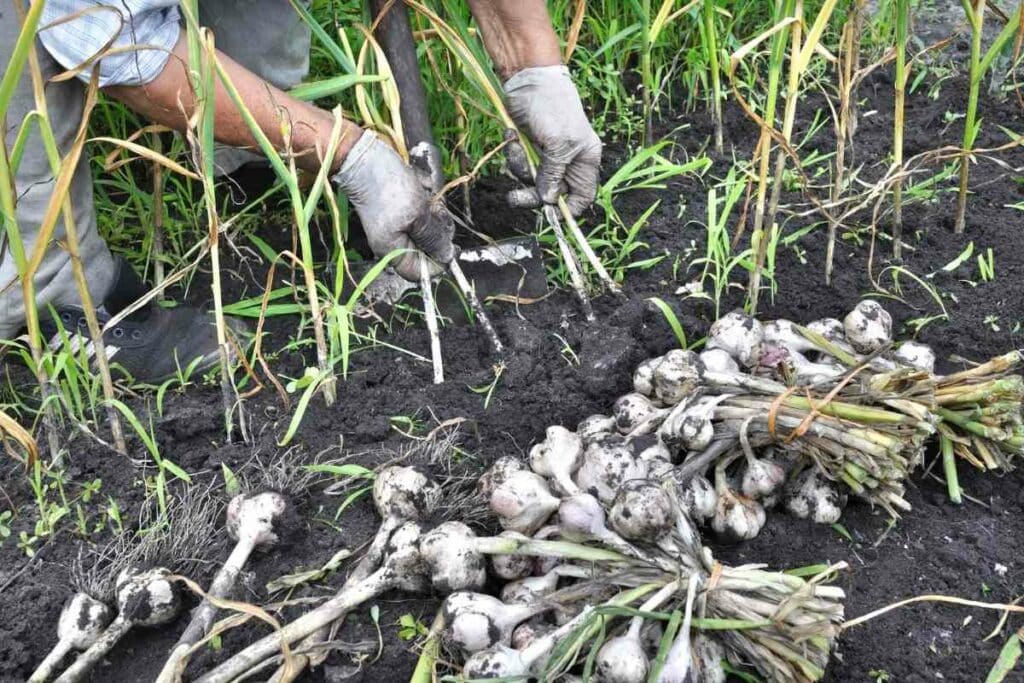
- Creeping raspberry
- Wild garlic
- Wild strawberries
- Dwarf comfrey – a dynamic accumulator
- Russian comfrey
- Lambs lettuce
- Sweet potato
- Kale
- Nasturtiums
- Lemon balm
- Walking onions
- Garlic
- Dewberry
- Oregano
Herbaceous layer plants
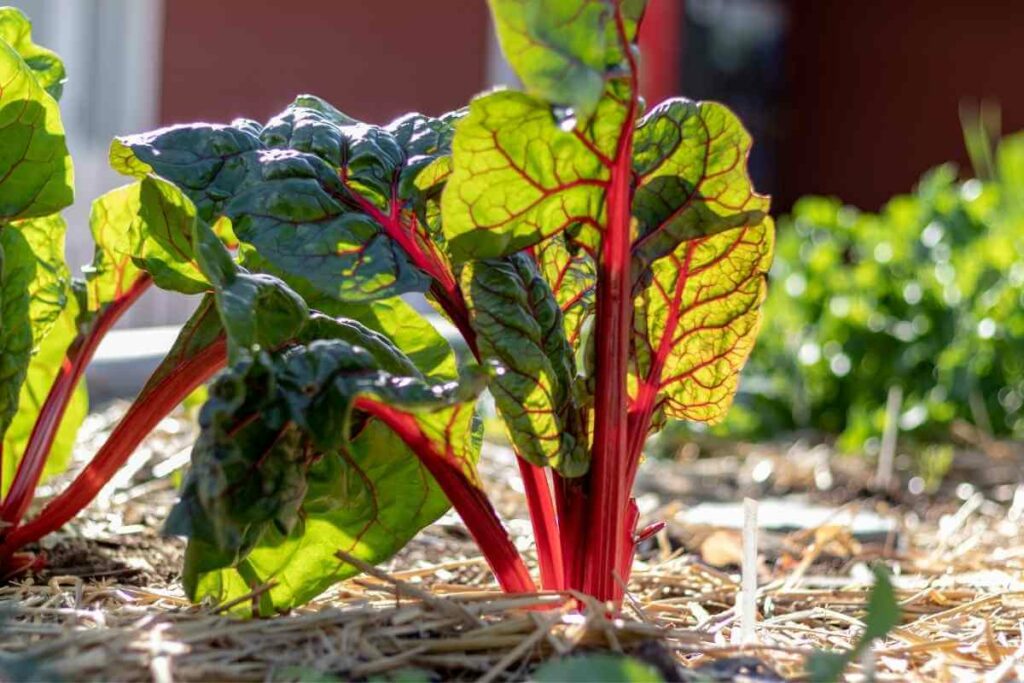
- Mint
- Caucasian spinach
- Globe artichoke
- Horseradish
- Rhubarb
- Lovage
- Lupins – nitrogen fixing
- Perennial leeks
- Welsh onion
- Chinese chives
- Daylilies
- Sweet Cicely
- Sea beet
- Celery
- Asparagus crowns
Shrub layer plants
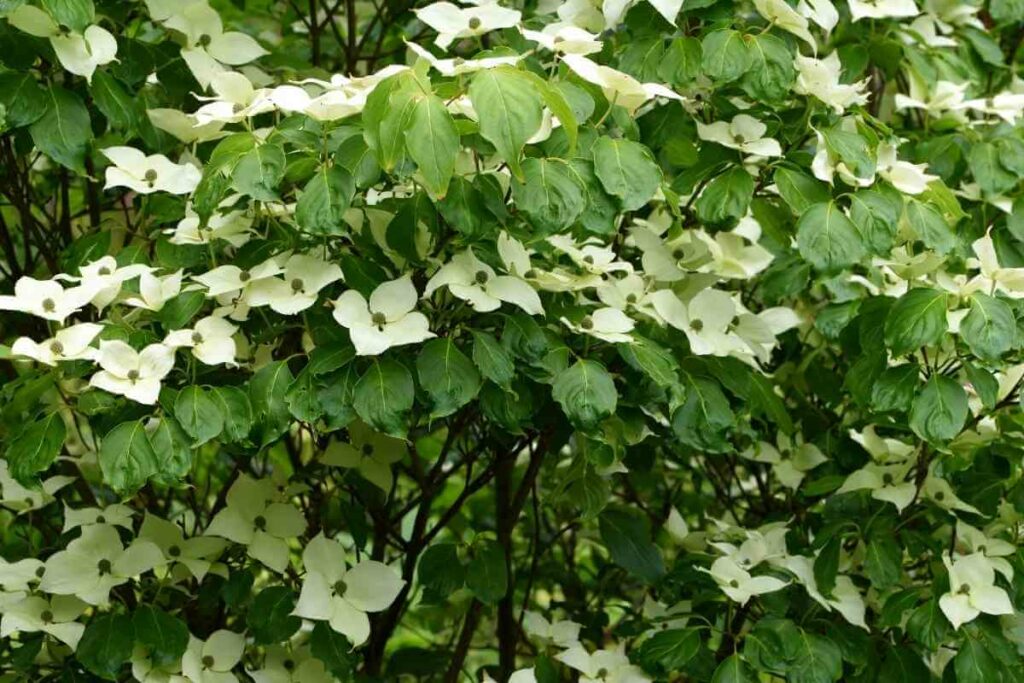
- Gooseberry
- Blackcurrant
- Blackberry
- Redcurrant
- Barberries
- Mahonia,
- Gaultheria shallon
- Chinese dogwood
- Chokeberries
- Broom – nitrogen fixing
- Elaeagnus – nitrogen fixing
- Beech
- Lime
Vertical climbing plants
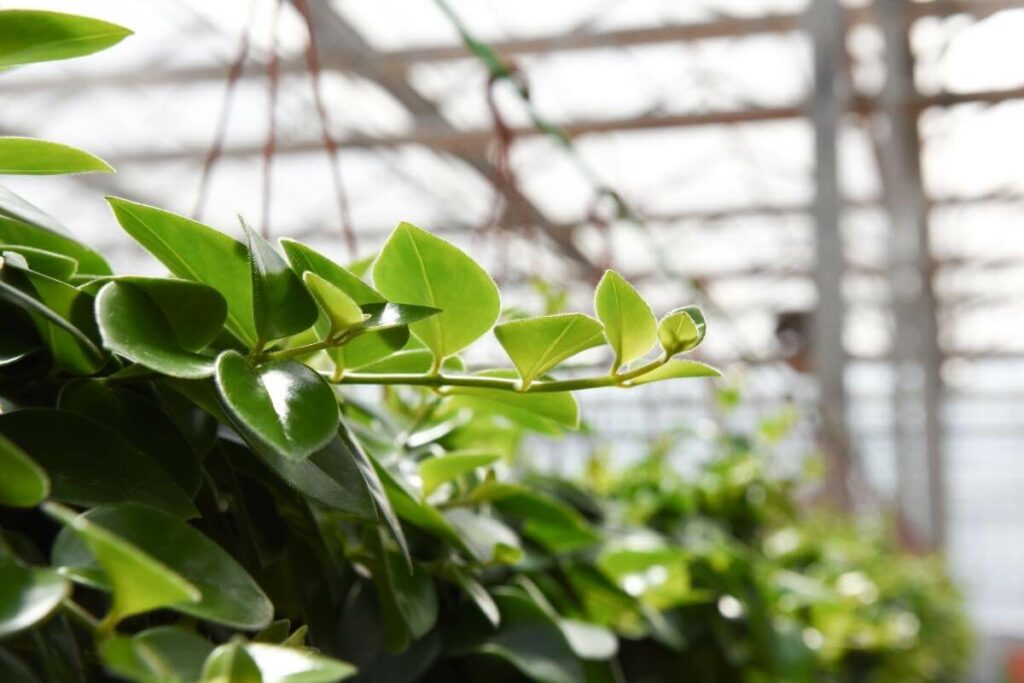
- Runner beans
- Loganberries
- Grapes
- Hardy kiwi
- Magnolia vine
- Passionfruit
- Mashua
- Hops
- Malabar spinach
Lower canopy plants

- Hazel
- Mulberry
- Crab apple
- Medlar
- Fig
- Greengage
- Miniature cherry
- Lemon
- Hazel
- Olive
Upper canopy trees
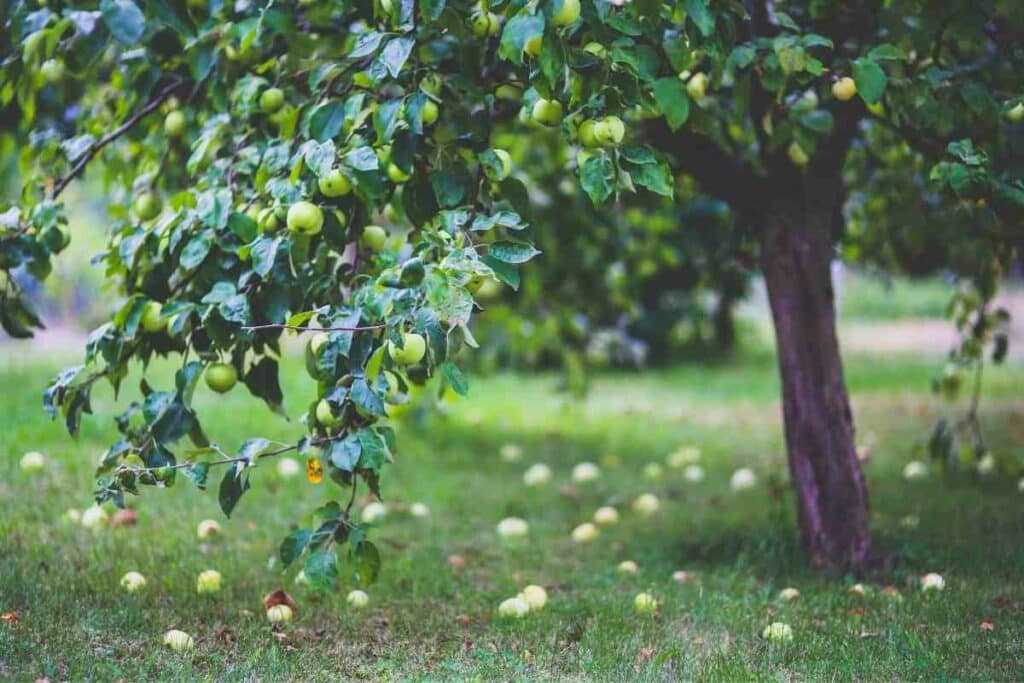
- Apples
- Pears
- Plums
- Chestnut
- Kentish cob
- Beech
- Lime
- Almond
- Walnut
How to create your forest garden
Getting your forest garden layers to become established and working together is a labor of love.
Be prepared for lots of experimentation because things may not work the first time.
It can take years of working on a forest garden to develop a garden that is self-sustaining with the right relationships between individual plants, but once you achieve these the rewards of a continual supply of readily foraged food is well worth the wait!

Here are the key steps for starting a food forest in your garden.
Research
Learning, or the recovery of knowledge, is a big part of forest gardening and permaculture.
Thankfully people who are further along on your journey in forest gardening are more than happy to share.
Read books, watch videos and reach out to agroforestry organizations for ideas and advice to get your plans off the ground.
Plan
A forest garden is a long-term project that you set in motion.
Careful planning is required to achieve results that will be not only productive but also practical and visually pleasing.
You may want to obtain professional help from a garden designer, landscaper, or agroforestry specialist who can help you turn your ideas and aspirations for your forest garden.
Soil testing and other measurements will help you select the right plants for your land.
Food forest expert James Prigioni provides some great tips for how you can set things up:
Source
If you are planting fruit trees for your forest garden invest in high-quality saplings from a reputable nursery.
Perennial plants can be purchased or started from seeds.
Again investing in good quality plants like asparagus crowns will ensure you enjoy reliable cropping year after year.
Plant
The different heights of the layers of your garden will produce a stepped effect.
But there are still many ways in which you can be creative with your plantings.
Here are some strategies you can try:
- Raised beds for groundcover and herbaceous plants
- Protection for young trees
- Tipis, frames, or trellis for climbing plants (alternatively they can climb trees)
- Terraces, to make use of natural gradients in your garden to trap light and heat.
Wait
With forest gardening taking your time is a virtue.
These gardens do not respond well to excessive weeding, tilling, and other forms of “interference”.
Simply support the plants in establishing themselves and the mutually beneficial relationships that will help your garden to thrive.
5 amazing forest gardens to inspire your forest gardening journey
- Tim and Maddy Harland of Permaculture Magazines ⅓ acre forest garden
Permaculture pioneers Tim and Maddy Harland have worked on their evolving forest garden since the 1980s and produced a rich food forest that shows all the principles of creating a food forest and the many benefits of this beautiful garden type that you’ll enjoy.
- Edible Landscapes
In the heart of London, Edible Landscapes are creating beautiful and nourishing forest gardening and teaching Londoners how to become self-sufficient by trying this new and low-maintenance gardening technique.
- US Eastern all-native edible forest garden
This is an amazing American forest garden that features an extraordinary range of native US food species that include:
- Pawpaw
- Nannyberry
- Persimmon
- Sunchokes
- Hickory nuts
- Black-capped raspberries and more…
- The largest food forest in the US
A food forest cannot just feed a single household. The idea is highly scalable and many non-profits are now creating these highly productive gardens that provide food and enrichment for communities. The city of Atlanta, Georgia has created the largest free food forest in the US on a 7-acre plot in the socially disadvantaged Browns Mill area.
- The Agro-Forestry Research Trust Garden
Martin Crawford started this remarkable educational garden in the 1990s in Devon, England, and shows the principles of forest gardening on a 2-acre plot. As a mature garden, it is self-sustaining and managed using permaculture principles.
Forest gardening organizations and resources
As a food forest gardener, you will be always learning and experimenting and finding new ways of making your land productive.
Start the journey by finding out more about forest gardening with these excellent, websites, blogs, and YouTube channels.
Reach out to these forest gardening organizations for information and advice
- The National Forest Gardening Scheme is a useful hub for information on the benefits of forest gardens and how you can start your own.
- The Agroforestry Research Trust provides the technical information you need to transform your garden into a food forest. They offer courses and an international symposium.
- Trees For The Future is an international agroforestry charity that provides information on the benefits of agroforestry for diverse communities across the globe.
- The Food Forest Project is a grassroots US organization that is dedicated to feeding communities across the US with food forests. If you don’t have a garden but want to get involved in forest gardening, this is a great organization to reach out to.
Check out these awesome bloggers who have all the know-how on food forests
- The Gardening Channel with James Prigioni: one of the worlds leading forest gardening vloggers straight outta Jersey
- Huws nursery: Welshman Huw Richards is a forest gardening and permaculture expert
- Food Forest Permaculture: a Canadian food forest channel packed with ideas and tips
Browse these informative forest gardening blogs for ideas and inspiration
- Mother Earth News: If you are thinking deeply about living a self-sufficient lifestyle, Mother Earth News has information on forest gardening and other strategies for living sustainably.
- Modern Farmer: This blog explores lots of alternative forms of agriculture and growing, including forest gardening.
- Permaculture magazine: This is a leading publication on permaculture and forest gardening with contributions from experts from around the world.
Rounding Up
Forest gardening makes an adventure of growing food and will amaze you with how much even a small garden can produce.
The simple principles are easy to understand and apply, with experiments and adaptations along the way as your garden matures.


